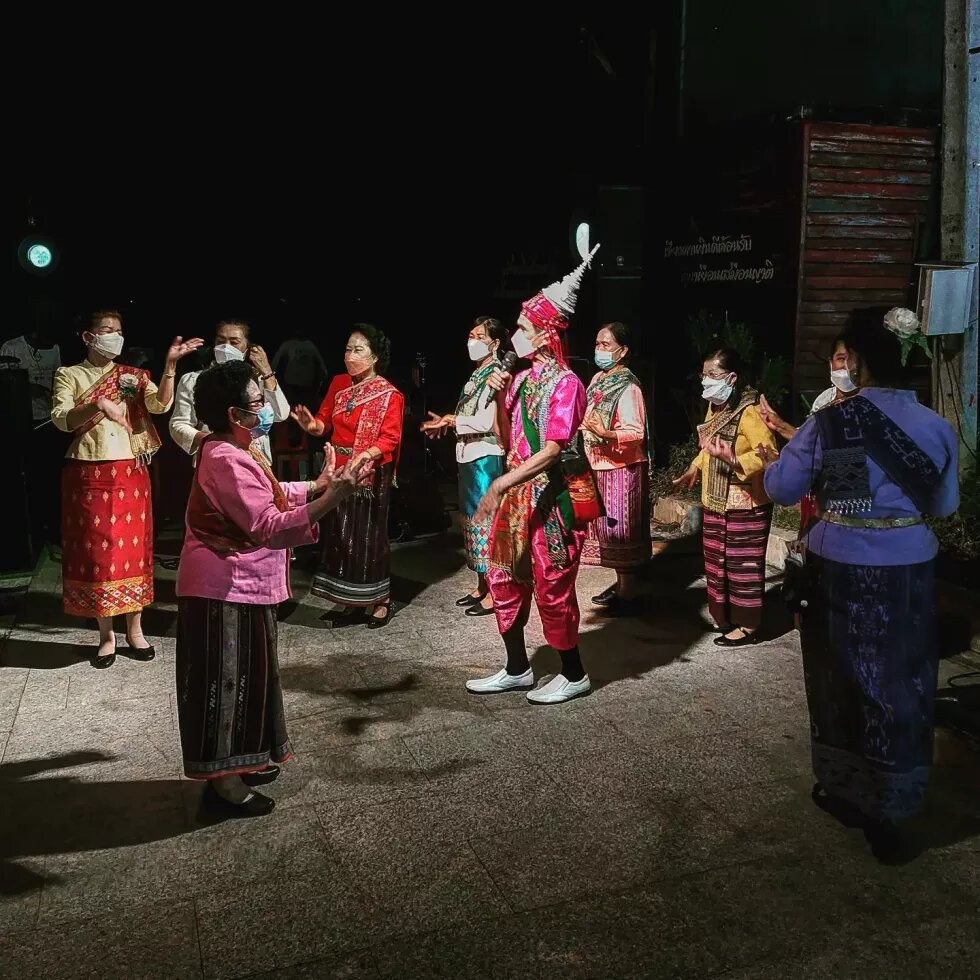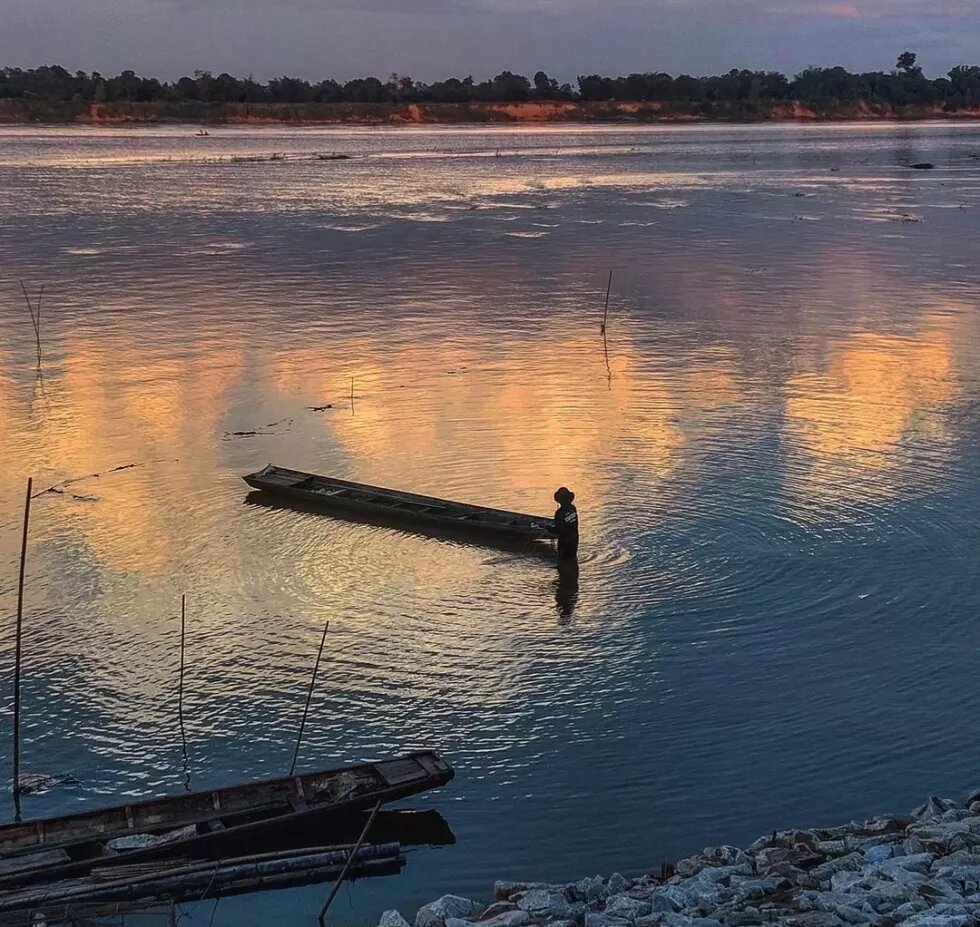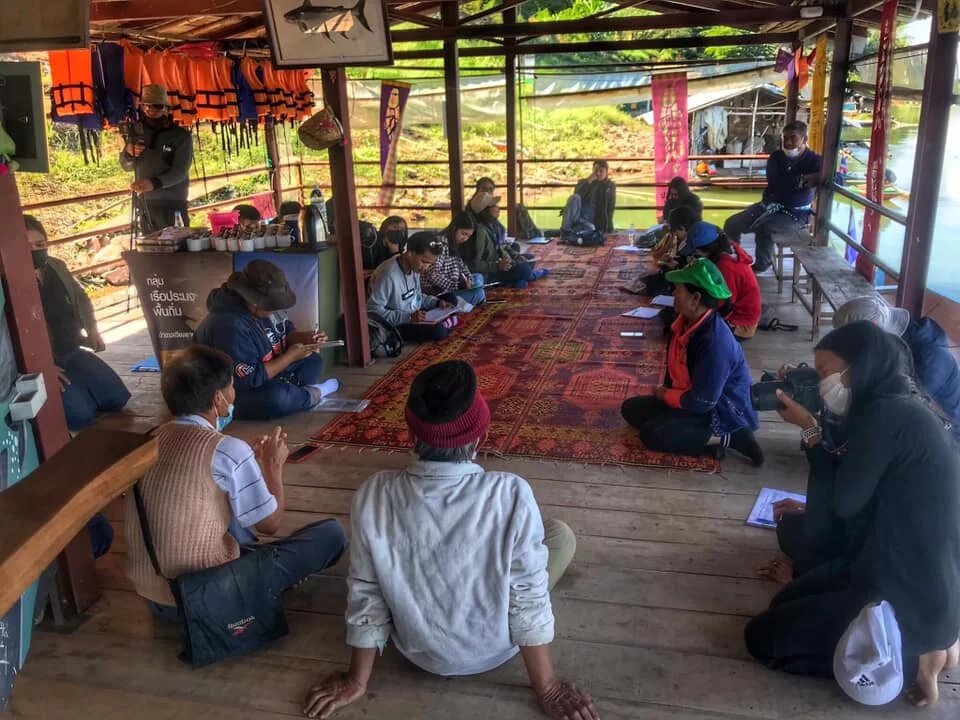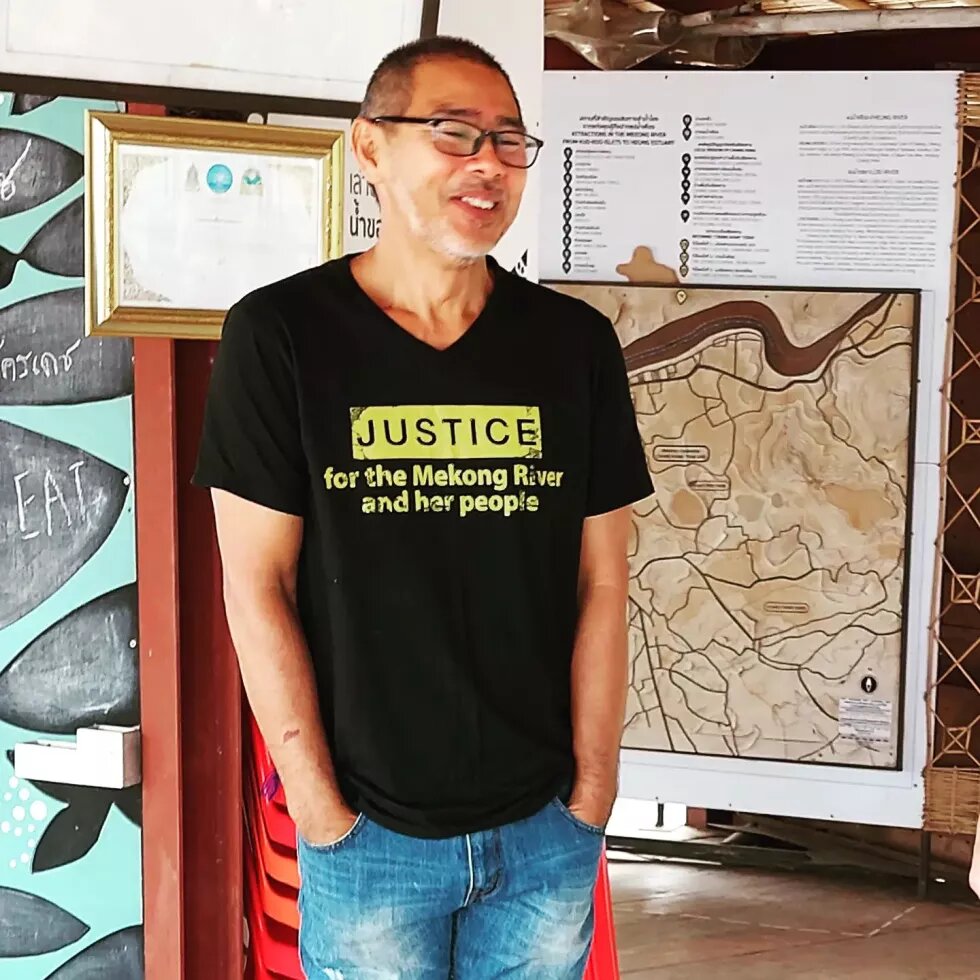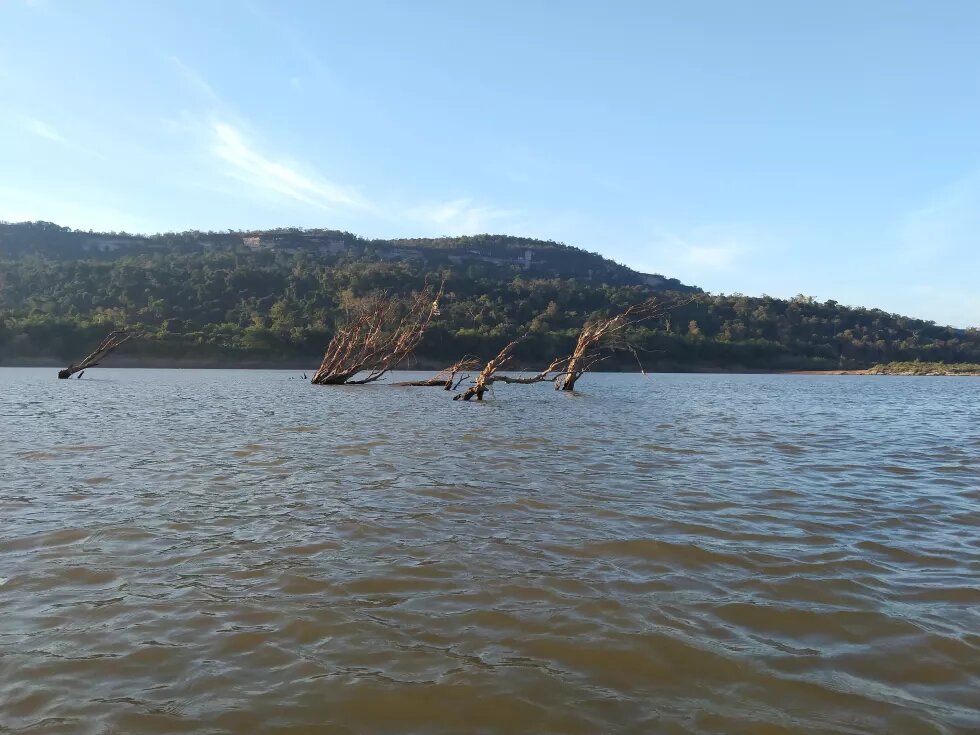
Hydropower dams on the Mekong mainstream have resulted in many negative impacts on riverine communities who depend on the river’s transboundary ecological web for their livelihoods. Ongoing plans for development continue to impact people’s lives – can it be halted before it reaches a tipping point?
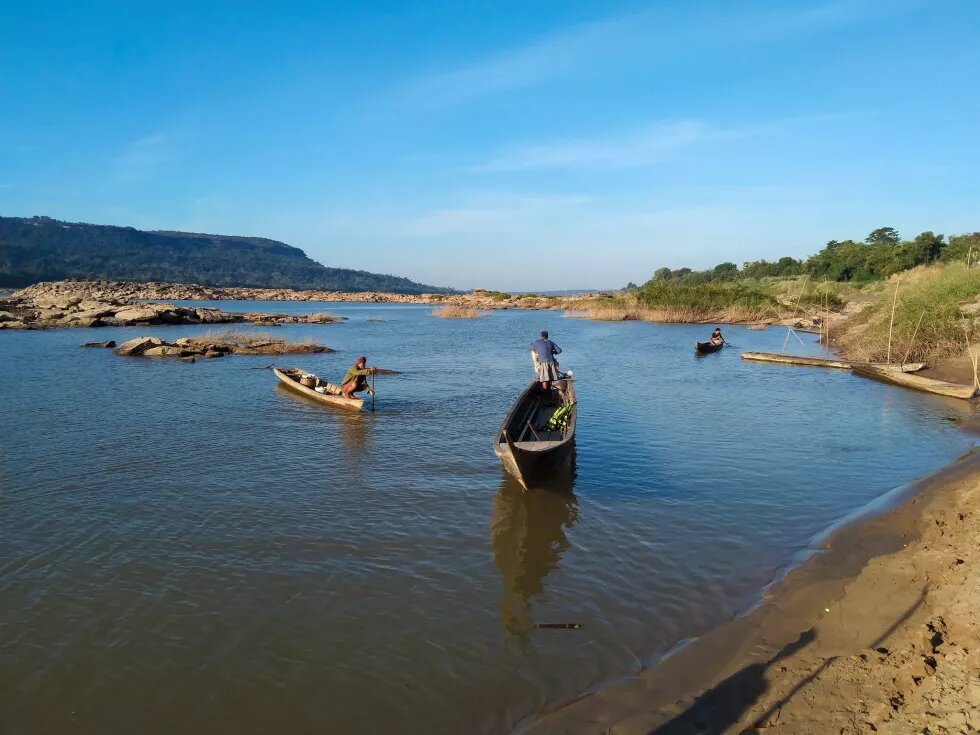
From sediment and nutrient losses to degraded soil on the riverbank, riverbank erosion, water fluctuation, water quality, declining fish species, and riverweed bloom – these are major problems that Mekong communities are facing.
With rising global temperatures, extreme climate patterns have also occurred more frequently in the past decades as a result of climate change. The Mekong region is not exceptional in facing this climate crisis. The operation of existing dams on the Mekong mainstream have also accelerated the severity of climate events, where heat waves, prolong drought, delayed and less rainfall, swift heavy rainfall and flash floods cause damage to food crops and yield and further intensify food insecurity.
In 2019, the Mekong recorded its worst drought, with water at its lowest level in 100 years. In early 2020, China released water from its Mekong hydropower dams reservoir to “help” relieve the drought in downstream countries. In 2021, due to lower rainfall and management of water discharge of dam reservoirs, it contributed to a “worrying” drop of the water level as well as some sections of the river turning a blue-green color. These three consecutive years from 2019–2021 recorded the Mekong water level at its lowest in more than 60 years.
As early as January 2022, the phenomenon of a “hungry river” which indicates the loss of sediments in the Mekong, coupled with low water levels, resulted in riverweed bloom in some parts of the river. Although riverweed is consumed as food in some of the Mekong communities, the early and longer period of its expansion in the river caused obstruction of fishing activities of fisher folks, damaged fishing gear, and reduced oxygen in the water, leading to aquatic animal death.
These impacts are irreversible with the operation of hydropower dams on the Mekong and new development being pushed. It is time to rethink development, particularly that which takes into account local people’s participation as well as community-based and non-Anthropocene centered solutions for climate crisis.
Local livelihoods and food insecurity worsen by Mekong hydropower development
Tamui village (also known locally as Ban Ta Mui) is located along the Thai-Laotian border in Khong Chiam district in Ubon Ratchathani, the last province in northeast Thailand where the Mekong separates Thai territory from Laos. Despite being hundreds of kilometers away from the nearest dam on the Mekong, its impacts are felt by the community here.
Ms Pim Boonratchsena, a 49-year-old Tamui villager, was born in the village and grew up here. Her family used to fish in the Mekong and had riverbank fields for planting crops. Back in her parents’ generation, there were not many farms and rice fields. In the rainy season, villagers collected mushrooms and bamboo shoots from the forest to earn income. Back in those days, from October to December when the water usually receded, her parents planted cotton along the Mekong riverbank and food crops such as green onion, cilantro, cabbage, cucumber and green bean. The livelihoods used to support the needs of the family but they are now facing much tougher conditions.
It has been around 7–10 years since her family stopped riverbank planting as she noticed changes happening to the Mekong River. She learned from news that the fluctuating waters occurred because of upstream dams in China and later also Xayaburi Dam in Laos.
Pim lamented that due to the changing water conditions, villagers who grow plants on the Mekong riverbank were not able to harvest them or the harvest was not as good as before. Some types of crops they used to grow such as cotton, corn and sweet potato are now almost gone.
“Planting along the Mekong riverbank nowadays is unusual. Because the flood waters don’t come as we expected it. When the water was supposed to decrease, it stayed the same. So when we planted along the riverbank, the water flooded and the plants that had started to grow were destroyed,” she said.
The Mekong situation has worsened, as Pim’s husband stopped fishing because fish became scarce and it was almost impossible to get a return on what he invested. “My husband was able to rely on fishing,” she outlined, “but now he has to change occupation. He raises cows and collects non-timber products from the forest. Because it’s very difficult to get fish. It’s not like before. Even when you get the fish, it’s not enough income.”
“Many things have changed,” Pim expressed, “before we used to plant [vegetables on the riverbank] for our family consumption, now we have to buy it from the market.” She added that “since we cannot rely on riverbank crops and fishing like before, we turn to work on land, like making our living from weaving and providing homestays for guests. We earn some small income to support our families.”
Existing dams on the Mekong mainstream have already exposed riverine communities to numerous hardships. There was a proposed Ban Koum Dam (also known as Salavan Dam) on the Mekong River that would have been located upstream of Tamui village but plans were suspended. More recently, Tamui villagers heard about a new dam project, located just downstream less than 2 km away. The villagers are concerned that it will make things even worse.
Pim raised her concerns and questions regarding hydropower development: “If it is built, will our village be relocated? Where will we live? What will we do to make a living? We grew up here. We live here. We can make a living here. It’s not too difficult to live here.”
Amidst the Mekong, natural resources have become more limited than ever before, and Pim hopes that relevant agencies could help her community though supporting livelihood rehabilitation. “If possible, I want occupational development funding support for our community and [there should be] a market to buy our produce. I don’t want any dam to happen,” she emphasized.
Resilience of the Mekong community, yet there is a threshold
Mr Channarong Wongla, coordinator of Rak Chiang Khan conservation group in Loei province where the Mekong River first enters Thailand territory in the northeastern region, has been advocating for sustainable livelihoods and development for nearly two decades. He emphasizes that the main environmental problem of the Mekong is caused by dams, though this was not acknowledged so explicitly in a recent decision by the Administrative Court of Thailand, which rejected claims that the power purchase agreement would have such impacts.
“We already knew it. If asked, what can we change now? At least after the Thai Administrative Court’s decision was made to dismiss the Xayaburi case, the [Mekong people] movement still continues. Such as pushing forward international environmental law and conducting comprehensive studies that engage [local resident] participation,” he said.
He added that humanitarian and environmental impacts must be included in feasibility studies because most dams only see economic benefits, but not its effects on the environment and local way of life. “We need information, measures and solutions in place as there has never been such a thing before, as in the case of Xayaburi Dam. Planned dams must be suspended,” Channarong declared.
Concerns about climate change and the situation after the COVID-19 pandemic are added challenges, the Rak Chiang Khan group acknowledge, in addition to the impacts of the Mekong dams such as reduction of water resources and degraded ecology. They continue to arrange local tourism in a way to communicate the impacts they face with the wider public, while at the same time earning some income to support members in the group.
Channarong pointed out his concerns and marked that: “We don’t know what will happen in the future. We have to solve the problems that we are facing first. If the ecology is destroyed, of course the way of life is affected. If we cannot catch fish, we lose our occupation and income. Then how will we continue to run our ecotourism?”
These experiences show that lives of residents along the Mekong River have become harder. Of course, they have to adapt themselves to survive in the world, amidst climate change accelerated by unsustainable development projects. But how long can people be resilient, considering the threshold of the Mekong River’s natural resources being taken away at a fast pace? The answers already exist, but are yet to be implemented.
__
Tipakson Manpati has been working on the environmental issue in the Mekong region for over 10 years. She has Bachelor degree in Mass Communication from Chiang Mai University and Master degree in International Development Studies from Chulalongkorn University. Tipakson is from an ethnic Phutai community in the Kalasin Province of Northeastern Thailand, and speaks Phutai, Lao, Thai, and English.
The views expressed in this publication are not necessarily those of Heinrich-Böll-Stiftung
